While we were in Lodi, NY I (Shae) drove to nearby Seneca Falls to visit the Women’s Rights National Historical Park. If you’re going to be in the region of either the Finger Lakes or Rochester, you should visit this and the Susan B. Anthony Museum & House.
I’d like to preface this post with a note that the women celebrated for the women’s rights movement still have some problematic elements to their lives, perspectives and, in some cases, actions. Women of color are often excluded from the story when it comes to the fight for women’s rights, especially women’s suffrage (voting rights), and that is not acceptable. Black women were often put at the back of marches or excluded from the work with other white women altogether. The home and work of Elizabeth Cady Stanton is a highlight of the park since one of her residences is part of the park and since she was one of the major organizers for the first convention for women’s rights. However, she made racist remarks and statements that can’t be ignored either. To learn more you can read this article.
The Women’s Rights National Historical Park has made an effort to include all voices in the women’s rights movement in both their tours (at least with the ranger I was with) and in their visitor center museum. But it’s worth being aware that in the overall context of the women’s movement from Seneca Falls and the organizations that grew out of them, they weren’t necessarily always for all women. But, there is still good within the work they did towards women’s rights, so let’s check it out.
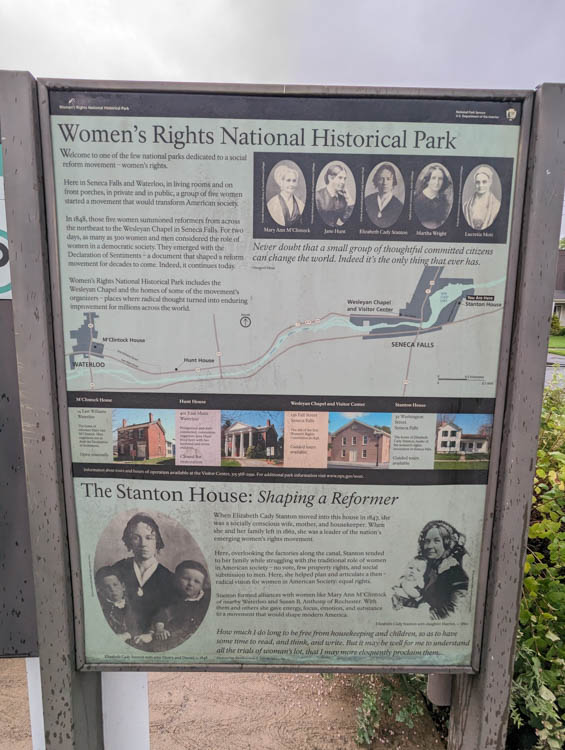
I started my day at the Elizabeth Cady Stanton house. You can only enter the house on a guided ranger tour/talk, so I made my way there for the 10am talk. It makes sense that this isn’t a historic house you can just walk through with a volunteer docent to answer questions because there isn’t any furniture in the house. This is one of the residences the Stantons lived in, so when they left they took their furniture with them. The National Park Service (NPS) has rules about what they will and will not allow in historic homes and even how they do renovations. However, you can see the house, hear the story of Cady Stanton, Susan B. Anthony and their 50 year friendship and more which means it’s worth going for the tour.
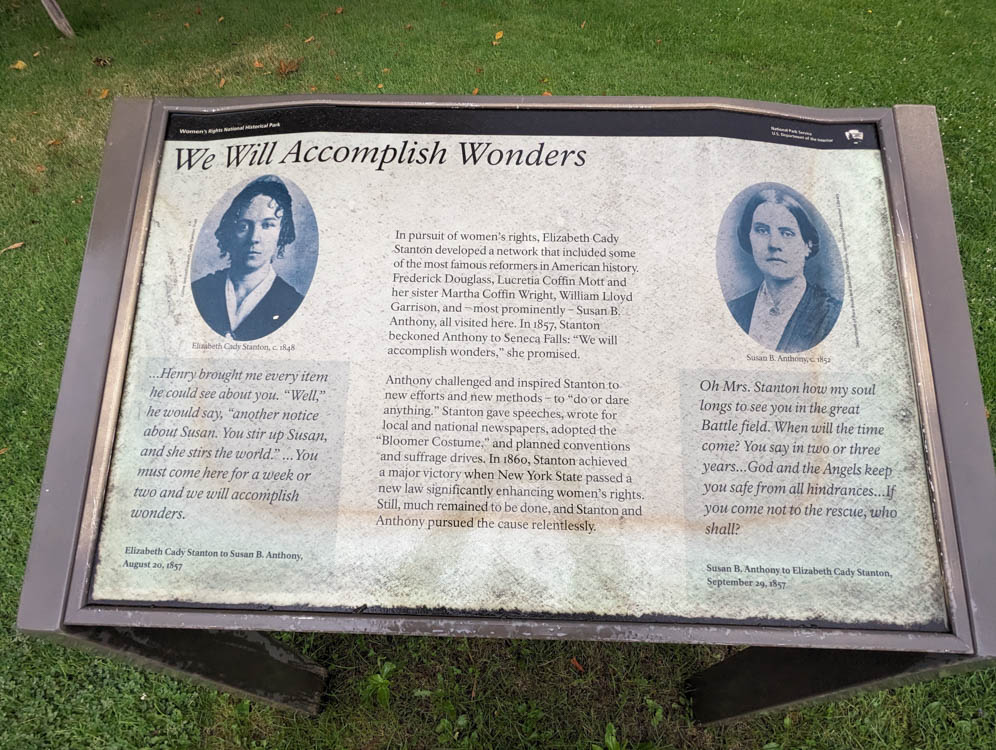
Elizabeth Cady Stanton was in a family with one boy and five girls; when her brother died she was 11 years old. She was determined to help fill that void of a boy in the family for her father and vowed to do all the things he would’ve done.

The house was purchased by her father – a judge – who was a big investor in the area, but also a man who rode the judicial circuit so it’s likely that he bought this house to have somewhere to stay. He deeded it to Elizabeth. Not her husband – her. This was illegal, according to NY State law for another year, so he either did it illegally (not impossible but unlikely for a judge) or (more likely) wrote the deed to her knowing that the legislation was likely to pass in the next year and gave it to her once it did. It would’ve been much larger than the house you see below – it had two other wings when Cady Stanton lived there.

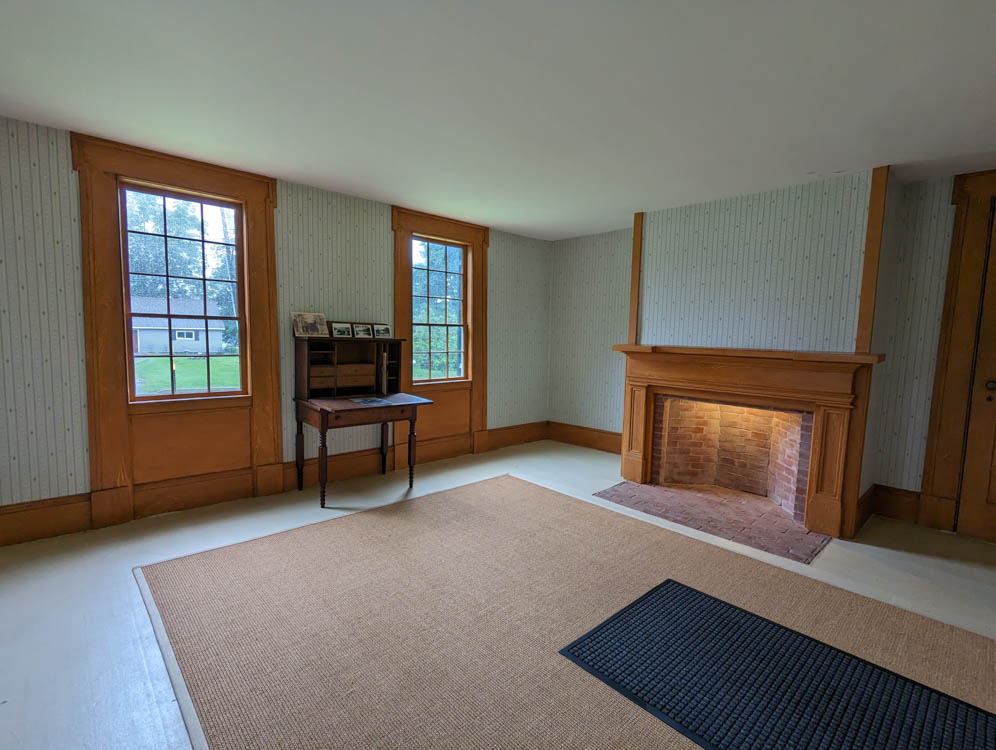
When the NPS was renovating the property they found this wallpaper in the layers and restored the room with the pattern. I have a weird fascination with seeing layers of paint and paper in historic homes. I love it when they recreate it based on what they’ve found – it just shows all the layers of time that have passed in the history of a space.
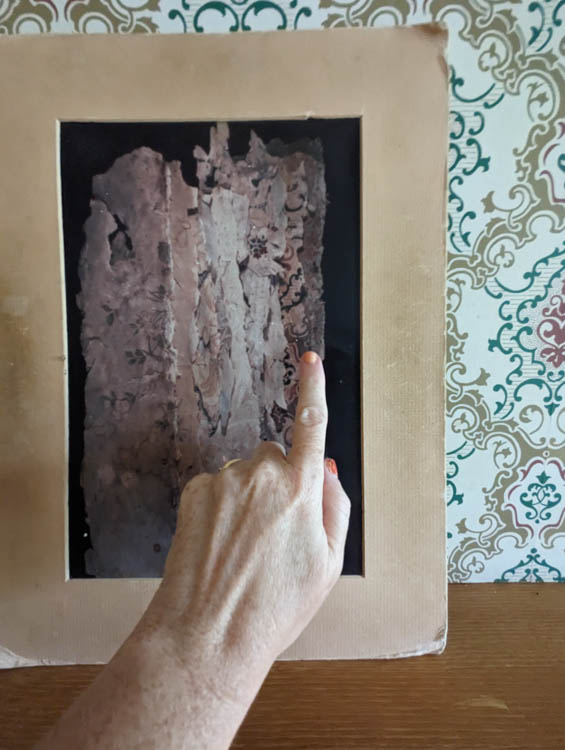


Once the tour finished at the Elizabeth Cady Stanton house I went over to the visitors center and the Wesleyan Chapel where the Seneca Falls convention happened. There was a talk there at 11am so I went to hear more. You can enter the chapel without a tour, but I wanted more details about the convention since I didn’t really know much about it.
This convention was birthed at another event in 1840 in London, England. Elizabeth Cady Stanton and her husband had just gotten married (she’s 25 at this time) and they’re on their honeymoon. As abolitionists they decide to attend the world’s first anti slavery convention 1840. This was to debate how to end slavery worldwide. There was a delegation of about 30-40 activists from the US and seven women including Lucretia Mott, a very famous abolitionist and orator who helped found the Philadelphia Female Anti-Slavery Society which was founded by both white and black women.
But none of the women are allowed in because they’re woman. The first day a bunch of hands from the American delegation go up, and basically say before we do anything else our entire delegation has not been seated. This starts a day-long debate about women being a delegate – the convention is for two weeks. In the end the compromise is that the women can attend behind the curtain and listen to the men, but they can’t speak, vote, etc.

Elizabeth Cady Stanton and 4 other women had tea together on July 9, 1848 while Lucretia Mott is visiting her sister. Those five women – Jane Hunt, Elizabeth, Lucretia, Martha Wright and Maryann McClintock – aren’t necessarily there to start a revolution. They were just ladies having tea. But it’s likely that they saw their babies crawling around them and got to talking about what kind of world they wanted for them. Out of this meeting came the decision to have a convention for women’s rights and they created a Declaration of Sentiments (which means grievances) that is based on the Declaration of Independence. If you want to feel some girl power – read it.
They set the convention for July 19, 1848. Yes, just 10 days later. It was to be a two day event with the first day only open to women and the second day open to men and women.

The chapel was a meeting space in the community so it was the obvious place for the convention. Over the years the building has taken on other uses, but the NPS has restored it and showed what it would’ve looked like when it had balcony seating.
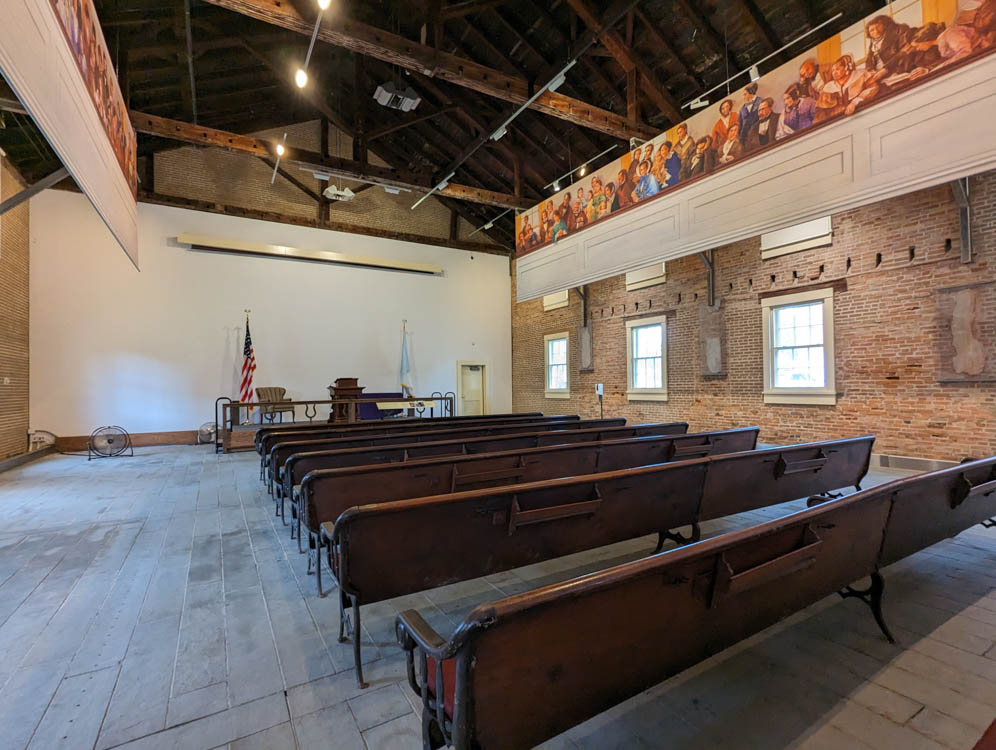
On July 19th, Elizabeth Cady Stanton arrives pleased to see over 100 women already waiting outside the chapel for the event – 300 men and women will attend by the end of the event. One notable thing is that two men, Elizabeth and Jane’s husbands, preside over the event because at that time it was considered “promiscuous” of both the audience and the speakers to have women speak to men, so Hunt and Stanton were “officially” over the gathering to prevent this issue. By the second Convention, just two weeks later, the women threw that idea out the window and women presided over their events from there on out.
They had guest speakers and voted that the Declaration of Sentiments did indeed speak to their grievances. At the end of the day, Cady Stanton reads a resolution that she wrote which had 11 action points for what the women wanted. It was read aloud but not voted on and Lucretia Mott speaks to end the day.
The next day, men and women come to the event and they hear the resolutions drafted by Cady Stanton and 10 of the 11 are unanimously voted on. One is not – the right of women to vote. In the end it’s Frederick Douglass who is in attendance who helps tip the balance for it and it’s voted for as well, although not unanimously.
Two weeks later a second convention is held in Rochester, NY and there were 600-1000 in attendance. Just two years later there’s the first national convention with 11 states being represented by over 1,000 delegates. The national convention is held every year for 10 years and then the Civil War begins.
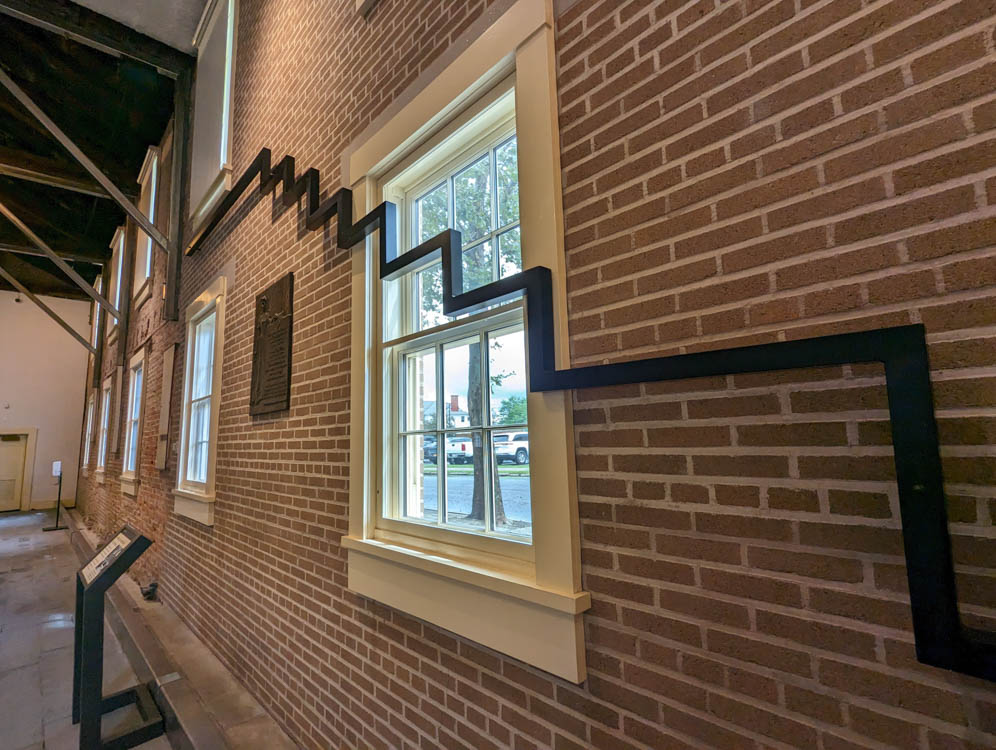



After both the tours were over I went to the visitors center to see the exhibits.


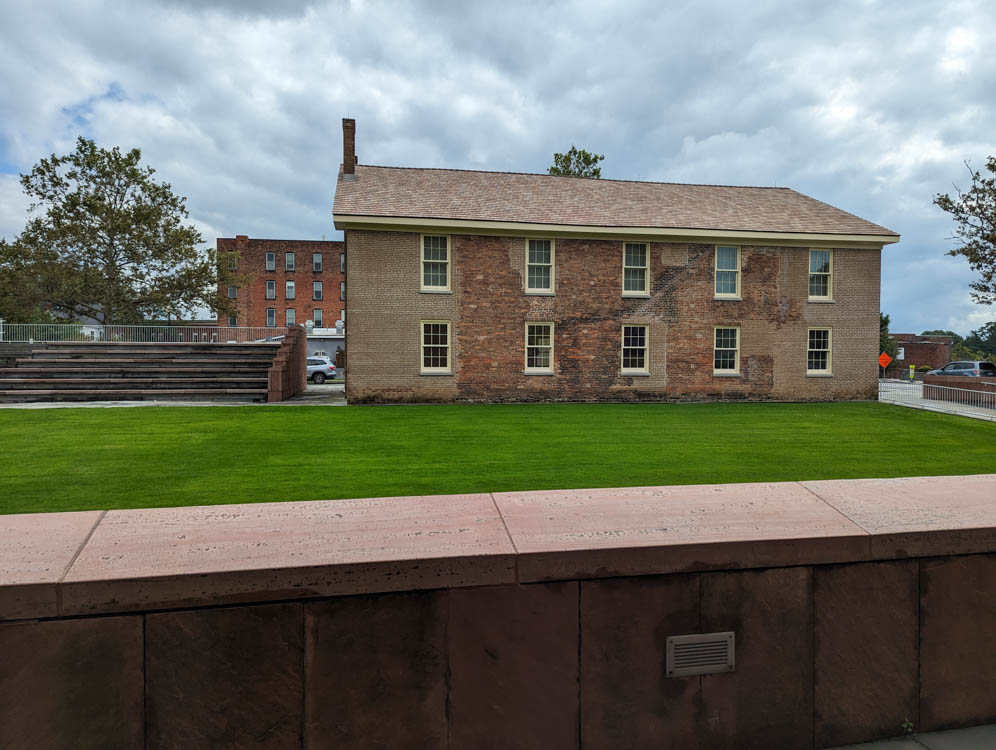
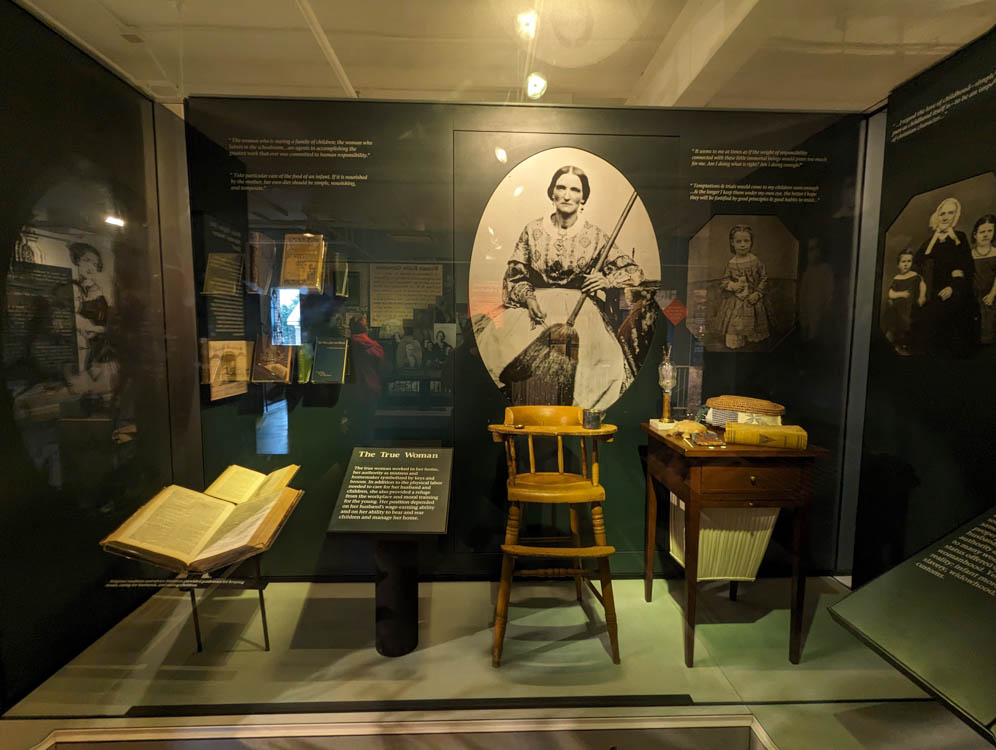

One story that was shared during our tour at the Cady Stanton house was that when Elizabeth was younger, she was showing a necklace off to her father’s law students. One, supposedly jokingly, said “if you were my wife that wouldn’t be your necklace, it would be mine.” At this time, if a women got divorced her husband owned everything, including her children, and she would likely never see them again.
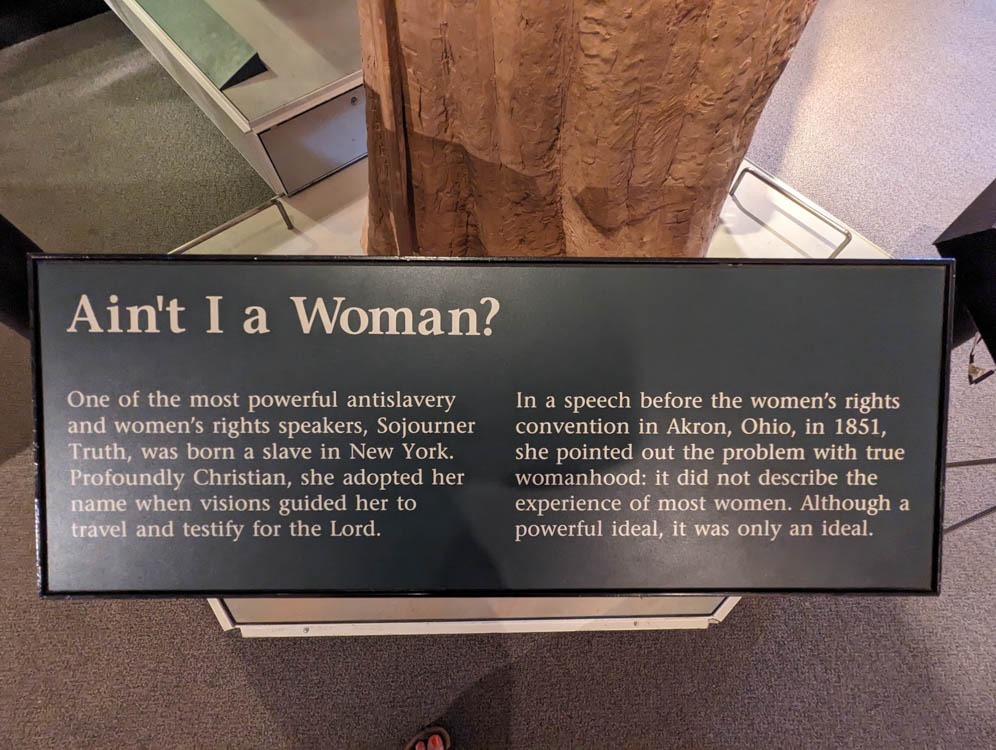
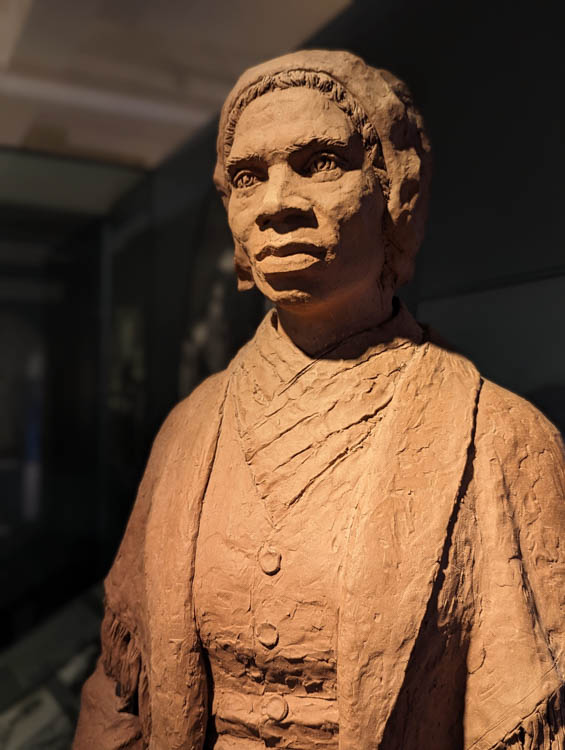
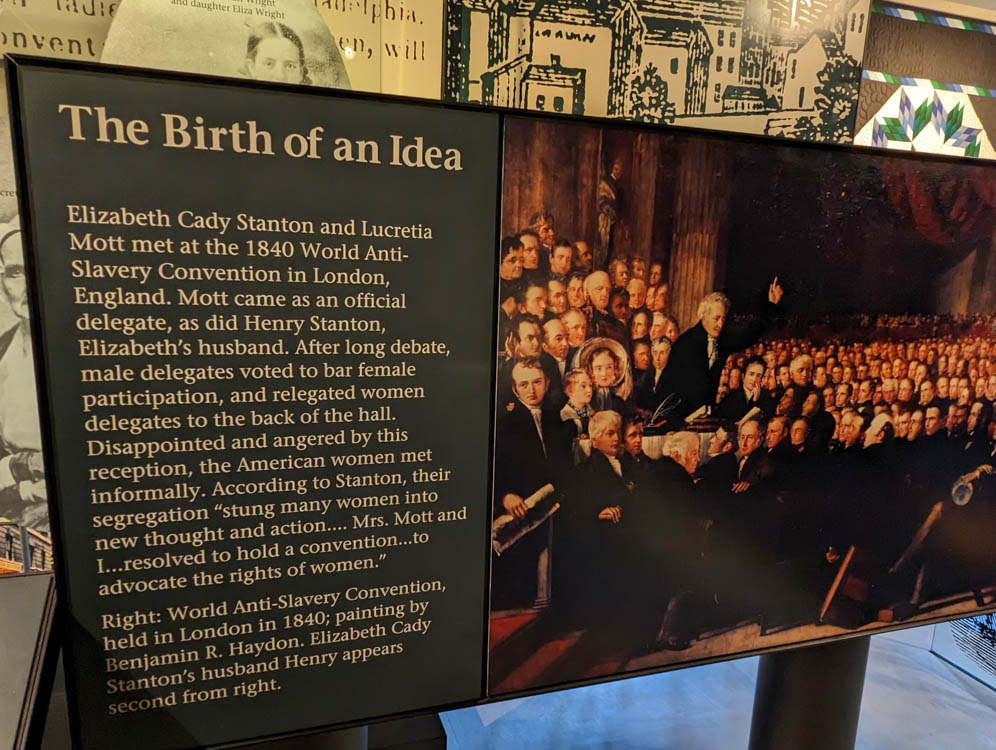
As I mentioned, the NPS does a good job of trying to widen the perspective to include marginalized voices in the women’s movement. One really interesting display was the information about the Haudenosaunee Confederacy and how they viewed women’s rights.
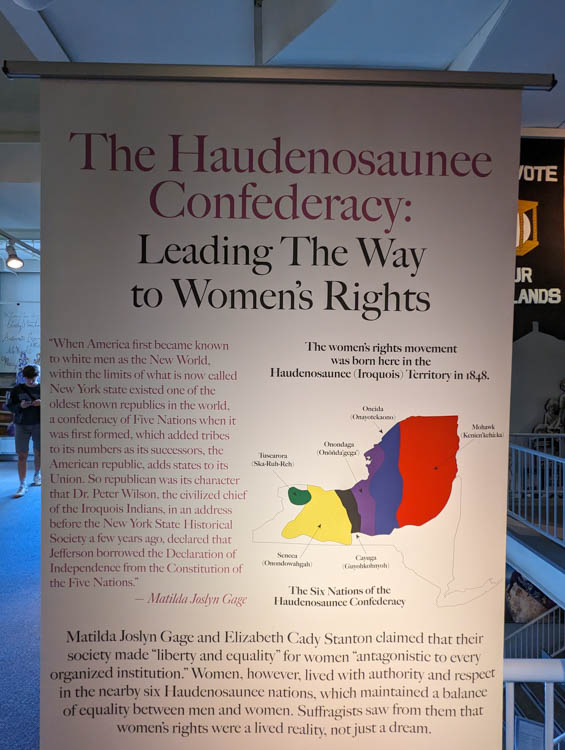


Of course, as with anything, when power is challenged there is pushback. Below are some of the cards that tried to skew the views on suffragists. (Is it suffragist or suffragette?)
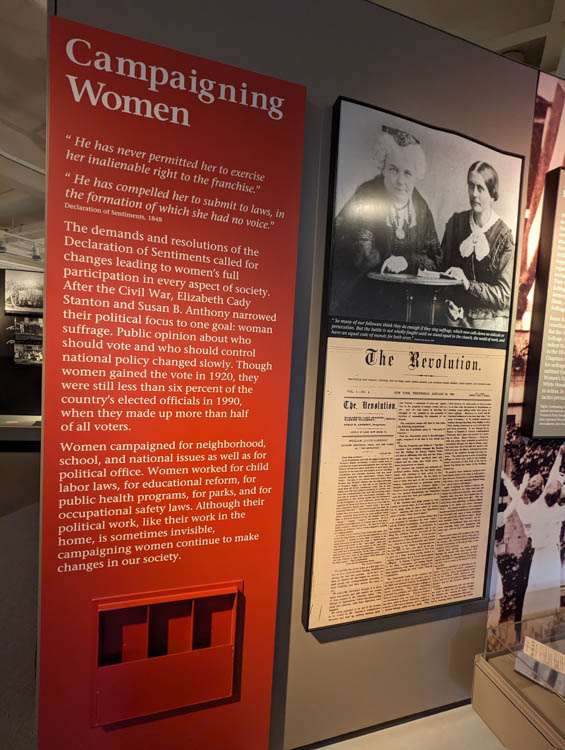

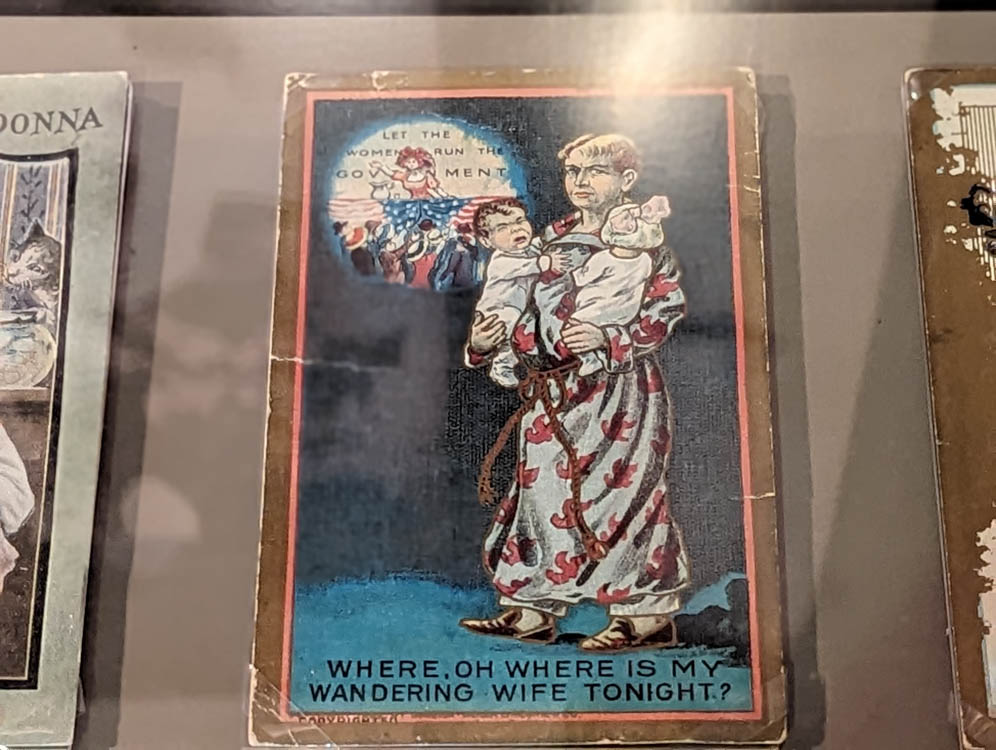
I loved this art exhibit with names of over 100 women with connections to Rochester, NY.


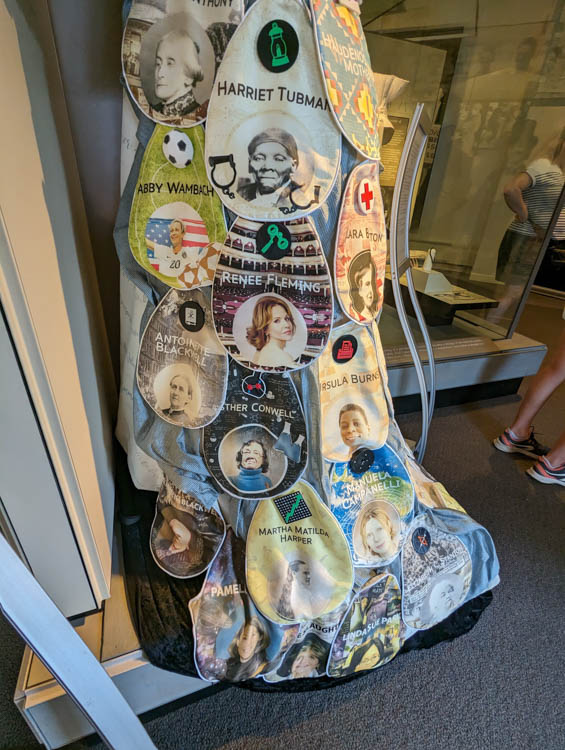

This exhibit really highlighted the “fashion” of corsets and how much damage they did to women’s bodies.
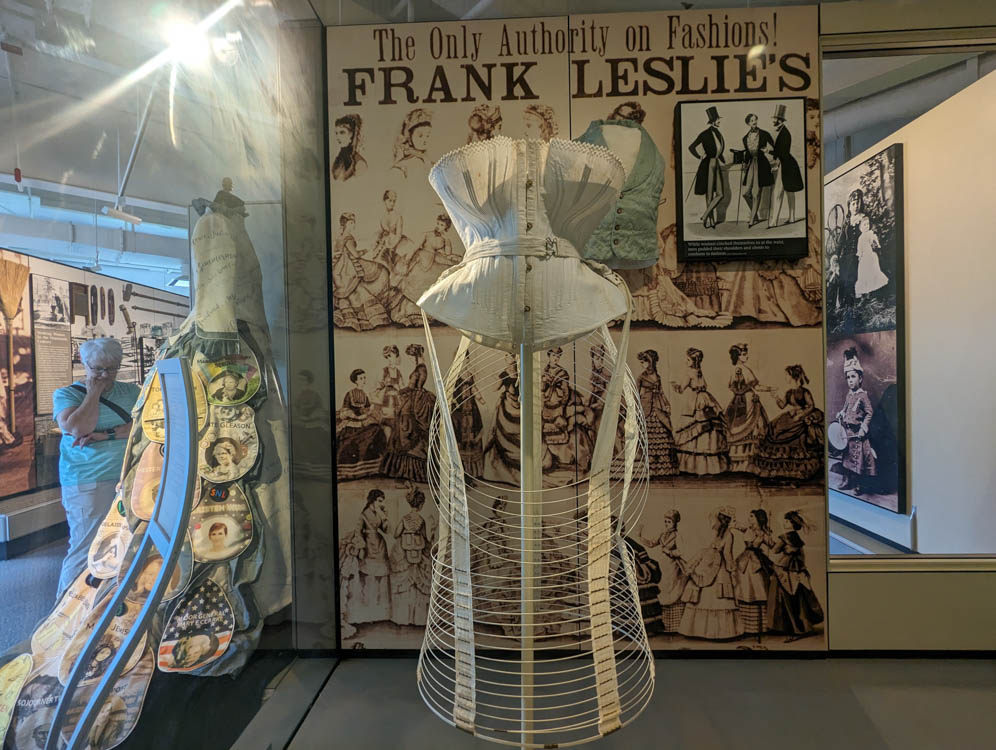

The Women’s Rights National Park was a great way to learn more about the beginnings of the women’s convention and movement in Seneca Falls, NY, as long as you go in to it aware of the fact that many involved in the movement excluded women of color. It’s completely free to visit the park and participate in the tours.

There’s a great little gift shop (they can be hit or miss at various parks) and this book was recommended by the ranger. It was written by a local author and looks at the issues around the racism of that time in relation to the women’s movement.

I had a little birthday money so I grabbed myself this bracelet. It’s a quote by Elizabeth Cady Stanton and has her name inscribe on the inside too – “I shall not grow conservative with age.”

Leave a Reply